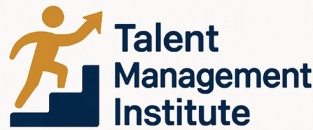
Defining Skill Utilization
Grasping the Concept of Skill Utilization in Today's Workspace
Skill utilization is a critical element in resource management that ensures the optimal use of employees' competencies within an organization. It involves a comprehensive evaluation of workforce utilization, focusing on aligning employees' abilities with the right tasks and projects for maximum efficiency. In essence, skill utilization captures how effectively an organization leverages its human capital's existing skills in day-to-day operations and long-term goals. In the context of talent management, the utilization rate often serves as a key metric for measuring how well time and resources are deployed across various projects. A high utilization rate generally points to the effective distribution of tasks, while low rates may indicate underutilized workforce capacity. Successful skill utilization translates to improved project outcomes, balanced workloads, and heightened employee satisfaction. This process not only enhances operational efficiency but also supports ongoing skills acquisition and development, directly contributing to professional growth and job satisfaction. A meta analysis of various organizations highlights that effective skill utilization is often linked with reduced turnover rates, as employees feel more engaged in their roles when their strengths are recognized and utilized. However, achieving optimal skill utilization requires more than just assigning tasks based on job descriptions. It demands an ongoing analysis of skills work, ensuring that both innate talent and acquired skills are being effectively incorporated into the workplace setting. For a deeper exploration into the dynamics between skill and will in talent management, navigating these complexities can offer valuable insights.The Importance of Skill Utilization
Recognizing the Advantages of Skill Utilization in the Workforce
Skill utilization plays a crucial role in optimizing the capacity and effectiveness of an organization’s workforce. It directly impacts how efficiently resources are employed and how well employees' skills are aligned with their tasks. By effectively leveraging skill utilization, companies can enhance work performance, leading to benefits such as increased productivity and employee satisfaction. In the realm of workforce management, skill utilization offers several advantages:- Optimized Resource Management: Efficient utilization improves resource allocation, ensuring that employees' skills are matched with appropriate tasks, leading to better outcomes in projects.
- Increased Employee Engagement: When employees feel their skills are being utilized effectively, their engagement levels tend to rise. Engaged employees are more likely to demonstrate higher morale and work ethic, which positively affects the overall work environment.
- Enhanced Skill Development: Skill utilization encourages continuous learning and skill acquisition. Employees who are regularly involved in tasks that challenge their abilities tend to seek further development opportunities. This becomes a catalyst for skill development and talent growth.
- Improved Problem-Solving Capabilities: When employees are placed in roles that align with their skill sets, they are better equipped to face complex challenges and demonstrate effective problem-solving behaviors, enhancing the organization's adaptability.
Challenges in Skill Utilization
Common Obstacles in Optimizing Employee Capacity
Effectively managing skill utilization can often encounter several hurdles. One significant challenge is the underutilization of employees’ skills. This not only impacts the individual’s job satisfaction but also affects the organization's capacity to complete tasks efficiently. When resource utilization is not optimized, the workforce utilization rate drops, ultimately minimizing the potential benefits of skill acquisition and development. Organizations frequently deal with competing priorities in resource management which can complicate efforts to effectively leverage employee skills. The pressures of balancing work demands and project management often lead to prioritizing immediate, short-term tasks over strategic long-term development. This can result in a misalignment between employees' capabilities and the tasks assigned to them. Furthermore, hesitancy in adapting to new technologies and integrating them into existing workflows can further complicate skill utilization efforts. Without proper training and change management, employees might feel overwhelmed, reducing overall productivity and engagement. Increasing the utilization rate is not merely a logistical endeavor but one that involves fostering a behavior of continuous learning and dynamic skills utilization across team members. The role of communication and feedback cannot be overlooked. Poor communication between project managers and their teams often leads to misunderstandings regarding job roles and responsibilities, consequently affecting how skills are utilized. Effective problem solving and a collaborative approach in the analysis and allocation of tasks are crucial to surmount these obstacles. For a deeper dive into addressing these skill utilization challenges, consider exploring the role of a development director in optimizing employee capacities.Strategies for Enhancing Skill Utilization
Effective Techniques to Boost Skills Utilization
Improving skills utilization within your workforce is essential for the success of any organization. This process involves optimizing the use of your employees' skills to ensure that tasks are completed efficiently, reducing the risk of wasting valuable resources. Below are some strategies to enhance skills utilization effectively.- Conduct Comprehensive Skills Analysis: An in-depth skills analysis will help identify the current capabilities of team members and areas for development. Understanding employees' skills better allows project managers to allocate tasks according to individual strengths, hence boosting resource management and overall productivity.
- Promote Continuous Skill Development: Organizations should invest in ongoing training and development programs. By encouraging skill acquisition and professional growth, companies enhance their workforce's ability to adapt to new roles and responsibilities, which can lead to a better utilization rate.
- Implement Effective Resource Management Tools: Utilizing technology tools designed for resource management can help monitor utilization rates and workforce utilization more accurately. These tools enable real-time tracking of employee utilization and project time, assisting in making strategic decisions for optimal resource allocation.
- Encourage Open Communication: Creating a culture of open communication allows employees to express their interests and skills beyond their current job roles. This behavior fosters a sense of involvement and ensures that managers are aware of the full spectrum of talents within the team, thus making informed decisions about task assignments.
- Optimize Task Allocation: Aligning tasks with employees' skills and workload capacity not only enhances skills utilization but also improves job satisfaction. Effective team managers tailor task allocation by considering both the project requirements and the available skills, ensuring that resources are used most efficiently.
- Focus on Long-term Talent Management Strategies: Developing long-term plans that account for changing skills needs due to evolving projects and industry trends is crucial. By keeping an eye on skills trends, organizations ensure that their workforce remains equipped to handle future challenges, maintaining a high level of resource utilization and expanding their capacity to undertake diverse projects.
Role of Technology in Skill Utilization
The Technological Edge in Skill Utilization
In the realm of talent management, harnessing technology can significantly enhance skill utilization, ensuring more efficient use of resources and capabilities. By understanding these technological advancements, organizations can better align their workforce with their strategic objectives. One prime application of technology is in workforce management tools. These tools help analyze and optimize the utilization rates of employees, aiding in effective resource management. Through tracking tools, project managers can gain insights into how employees are spending their time and which projects may require additional resources. This enables a more balanced allocation of tasks, ensuring that each team member's skills are used effectively. Moreover, technology facilitates skill development and acquisition by providing platforms for online training and development programs. Employees can enhance their management skills and problem-solving abilities at their own pace, leading to improved job performance and long-term professional services. Artificial Intelligence (AI) and machine learning further contribute by predicting workforce utilization patterns based on past data to optimize future planning. These technologies assist in conducting a comprehensive analysis of employee utilization, helping identify trends and areas that may require additional training or resources. Lastly, cloud-based project management software provides project managers with real-time data on resource utilization, simplifying the assessment of skills utilisation across projects. By leveraging these tools, organizations can ensure that their workforce capacity aligns with ongoing and future project needs, leading to a more cohesive and efficient work environment.Case Studies on Skill Utilization
Real-World Examples of Effective Skill Utilization
Understanding how skill utilization plays out in real-world scenarios can offer valuable insights for organizations aiming to optimize their workforce. Here are a few case studies that highlight the successful implementation of skill utilization strategies.
Case Study 1: Tech Firm Enhancing Project Management
A leading tech company recognized the need to improve its project management processes. By conducting a thorough analysis of employee skills and aligning them with project requirements, the firm was able to enhance its resource management. The result was a significant increase in project completion rates and overall efficiency. This approach not only improved utilization rates but also boosted employee satisfaction by aligning tasks with individual strengths.
Case Study 2: Retail Chain Optimizing Workforce Utilization
A large retail chain faced challenges with workforce utilization during peak seasons. By implementing a dynamic scheduling system that considered employee skills and availability, the company was able to maximize its resource utilization. This strategy reduced the time employees spent on tasks that did not match their skill set, leading to a more engaged and productive workforce.
Case Study 3: Professional Services Firm Focusing on Skill Development
In the professional services sector, a firm invested in skill development programs to enhance employee capabilities. By offering targeted training sessions, the firm improved its employees' skills, leading to better problem-solving and project outcomes. This investment in skill acquisition not only improved the firm's long-term capacity but also increased the utilization rate of its workforce.
These case studies illustrate the tangible benefits of focusing on skill utilization within talent management. By aligning skills with tasks and investing in skill development, organizations can enhance their resource utilization and achieve better business outcomes.













